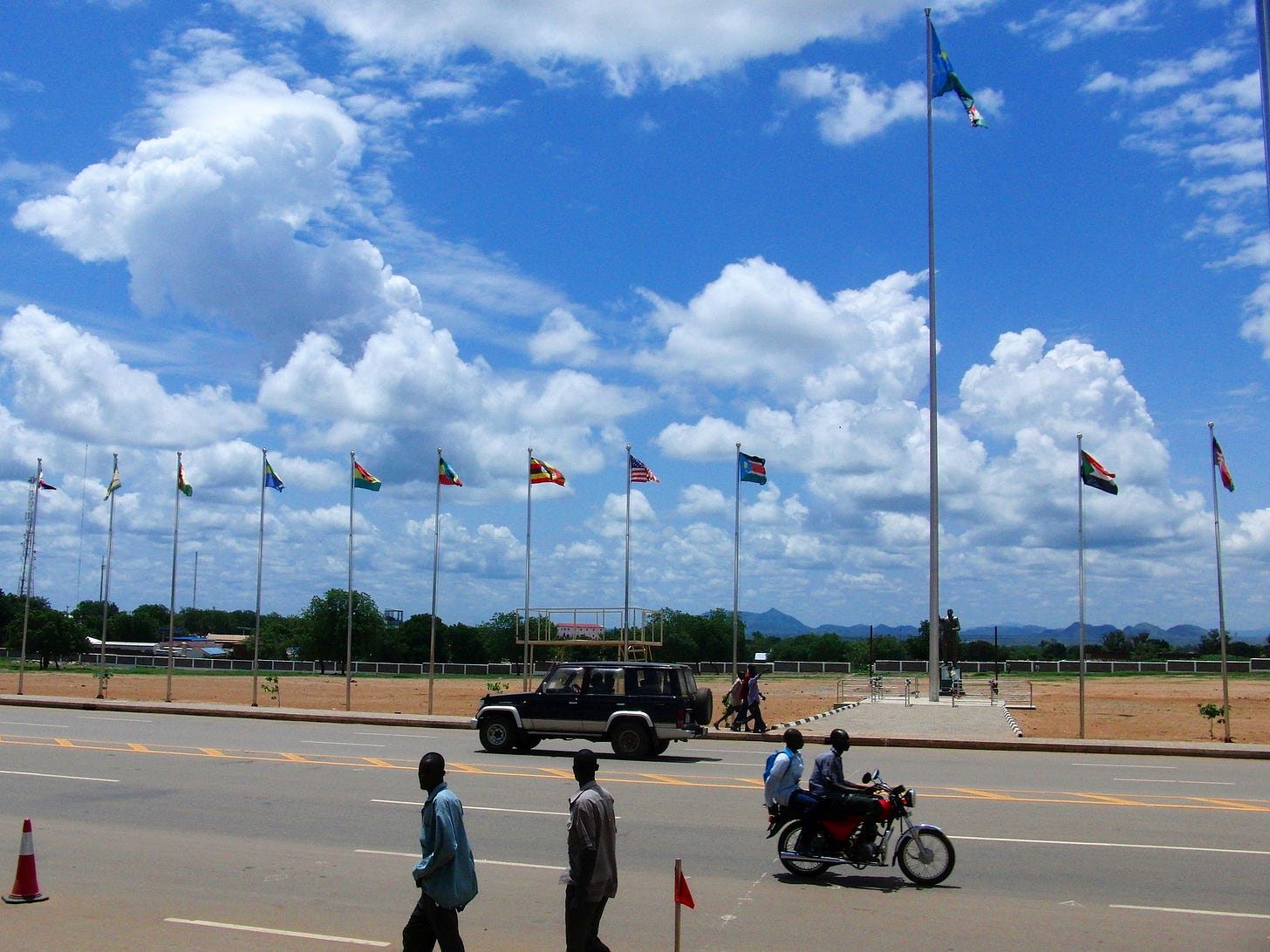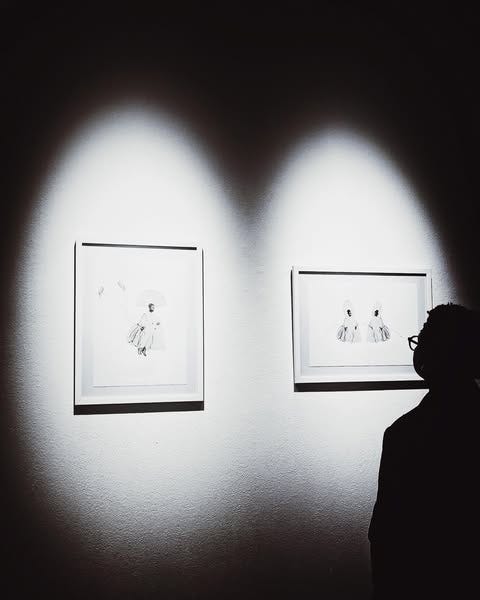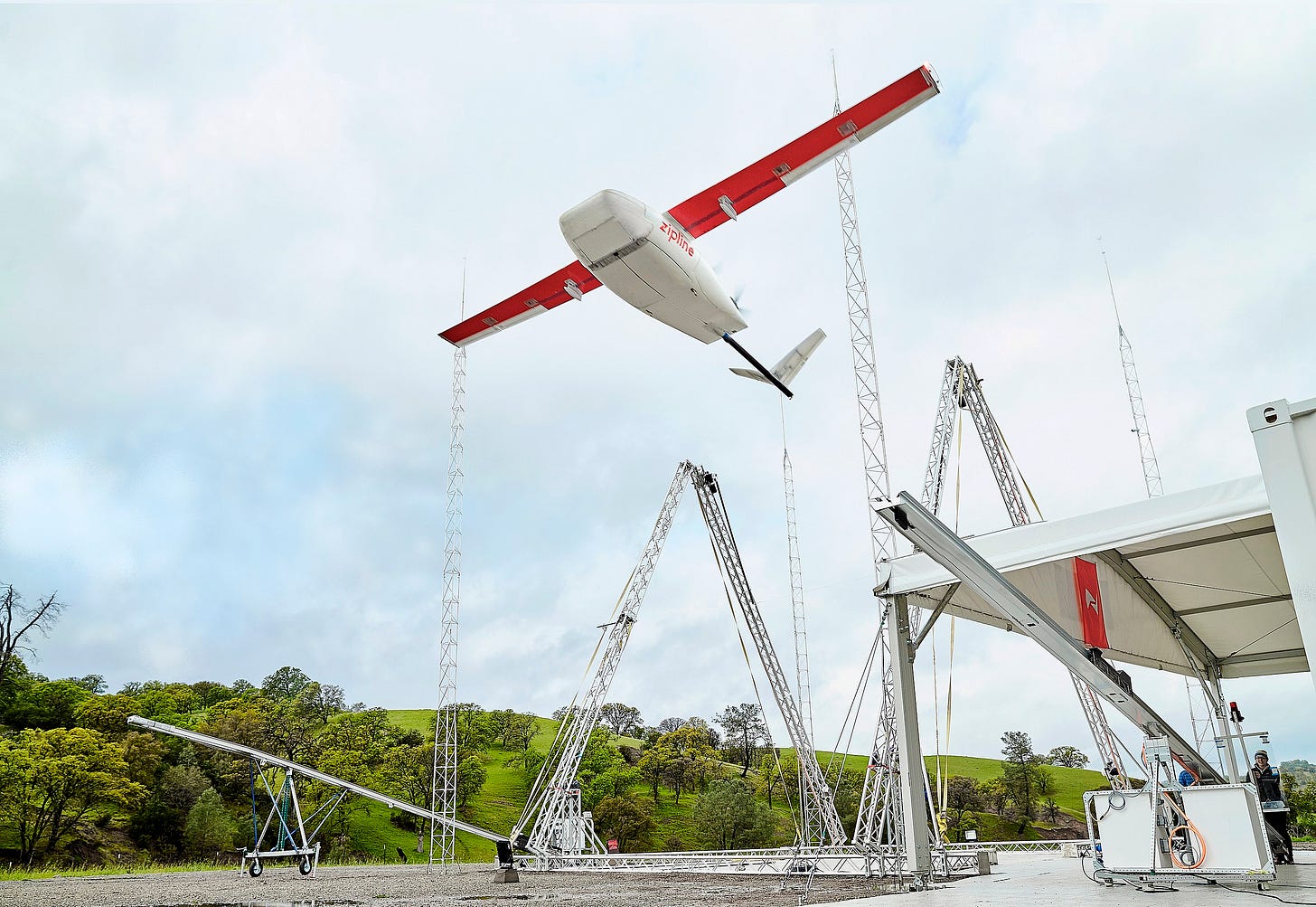Good morning from… can you guess where? (Answer at the bottom!)
Night Visions, Scissors, Glue: How Tshepiso Moropa Turns Déjà-vu into Collage Gold
Ever wake up from a dream so vivid you can still taste the weirdness? Whenever that happens, Tshepiso Moropa doesn’t reach for a dream journal, she raids the archives. The South African collage artist’s series Ditoro (“dreams” in Setswana) splices public-domain photos, family snapshots and her own camera roll into surreal stage sets where ancestry, memory and fashion week all mingle at 3 a.m.
Take Ke Go Beile Leitlho (“I’ve Got My Eyes on You”): picture Grandma and Grandpa, reincarnated as couture spirits. Granny lounges on a leather sofa in a billowing white gown sprouting lace wings; Granddad stands guard in equally sharp whites and a wide-brim hat. A third woman peeks from behind the couch – nosy relative or astral photobomber, you decide.
Moropa’s creative process is akin to forensic scrapbooking, hunting for images with the right “energy,” surgically snipping them out, then layering and rearranging them until the dream’s hush returns. Costumes, postures, even the negative space obey instinct rather than Photoshop logic. The result is a tableau that feels as if your great-grandparents crashed a Vogue spread and left you cryptic advice you’ll never quite decode.
For Moropa, collage is a séance with scissors, a way to eavesdrop on ancestral messages and pin them to the wall before daylight erases the details, and the results look spellbinding. Check them out!
Africa’s Fastest-Growing Companies: The 2025 List Highlights the Usual Suspects
The Financial Times has just dropped its 2025 ranking of Africa’s fastest-growing companies, and (spoiler) South Africa and Nigeria are once again hogging the spotlight. Together, they account for 79 out of the 130 listed companies, with South Africa alone flexing 51 entries. That’s nearly 40% of the list.
The ranking, compiled with Statista, looks at compound revenue growth between 2020 and 2023, and while it’s not exhaustive (many private companies keep their books close to the chest), it offers a credible pulse on the continent’s entrepreneurial energy.
But the dominance of these two giants also raises eyebrows. While the list celebrates growth, it also underscores a familiar reality: Africa’s business landscape remains deeply fragmented, and until cross-border operations get easier, the leaderboard will continue to favor the heavyweight incumbents.
You can take a look at the list right here, and we’re curious to know – do you think it is truly representative of where you live?
Hit reply and let us know!
US Cuts to African Health Aid Prompt Local Solutions – and Opportunity for Private Firms
Two articles from Bloomberg illustrate how Africa is hustling to plug the hole left by billions of dollars in canceled American aid under Donald Trump. From Addis Ababa to Lagos, national agencies and private companies are stepping in with new funding strategies – and seizing unexpected business prospects.
‘Never Again Will We Get What We Had’
Jean Kaseya, Director-General of the Africa CDC, says the continent’s in an “unprecedented financing crisis.” With the US freezing most of its African aid – crucial to HIV prevention, pandemic preparedness, and more – countries have to get creative. His suggested solution is to increase taxes on airline tickets, sugary drinks, tobacco, and, yes, the private sector, too. “Africa cannot just keep begging,” Kaseya says.
What’s at Stake?
Sub-Saharan Africa battles HIV, malaria, mpox, and a raft of diseases.
Many countries spend more on debt interest than on health care.
Kaseya wants philanthropic bigwigs, like billionaire Aliko Dangote, and foreign donors, to match the continent’s own renewed efforts, so Africa can finance its future on its own terms.
Zooming in with Drones
That same vacuum has turned into an opening for companies such as Zipline, a US-based medical drone firm. Seeing “gaps” left by the US aid exodus, they’re in talks with Nigeria to expand drone-delivery services for vaccines, blood, and other essentials. Nigeria, which got $790 million from the US in 2024 alone, is stumping up $200 million from its 2025 budget for new health infrastructure, and Zipline stands ready to fill the old (and brand-new) distribution cracks.
How Does It Work?
Zipline’s drones whisk medical supplies to remote areas, bypassing potholed roads and slow supply chains.
Already in Ghana, Rwanda, Ivory Coast, and Kenya, they aim to grow in Nigeria – and in “two other African countries,” so says senior VP Caitlin Burton.
The Big Picture
Africa CDC and national governments see the US cutoff as a wake-up call. Less “bailout,” more local solutions.
Companies like Zipline see an opportunity to scale up – especially where donor shortfalls hamper old supply systems.
In short, while Trump’s new policy hammered public budgets, it also nudged African health systems to pivot – from new “sin taxes” to high-tech medical drones. Whether that push fosters lasting independence or deepens the chaos is still up in the air, but the post-aid era is certainly rewriting Africa’s playbook on health funding and innovation, and that might just be a good thing.
Food for Thought
“A nice word is better than a nice mattress.”
— Ethiopia Proverb
And the Answer is…
The photo is taken from Juba, South Sudan! You can also send in your own photos, alongside the location, and we’ll do our best to feature them.








